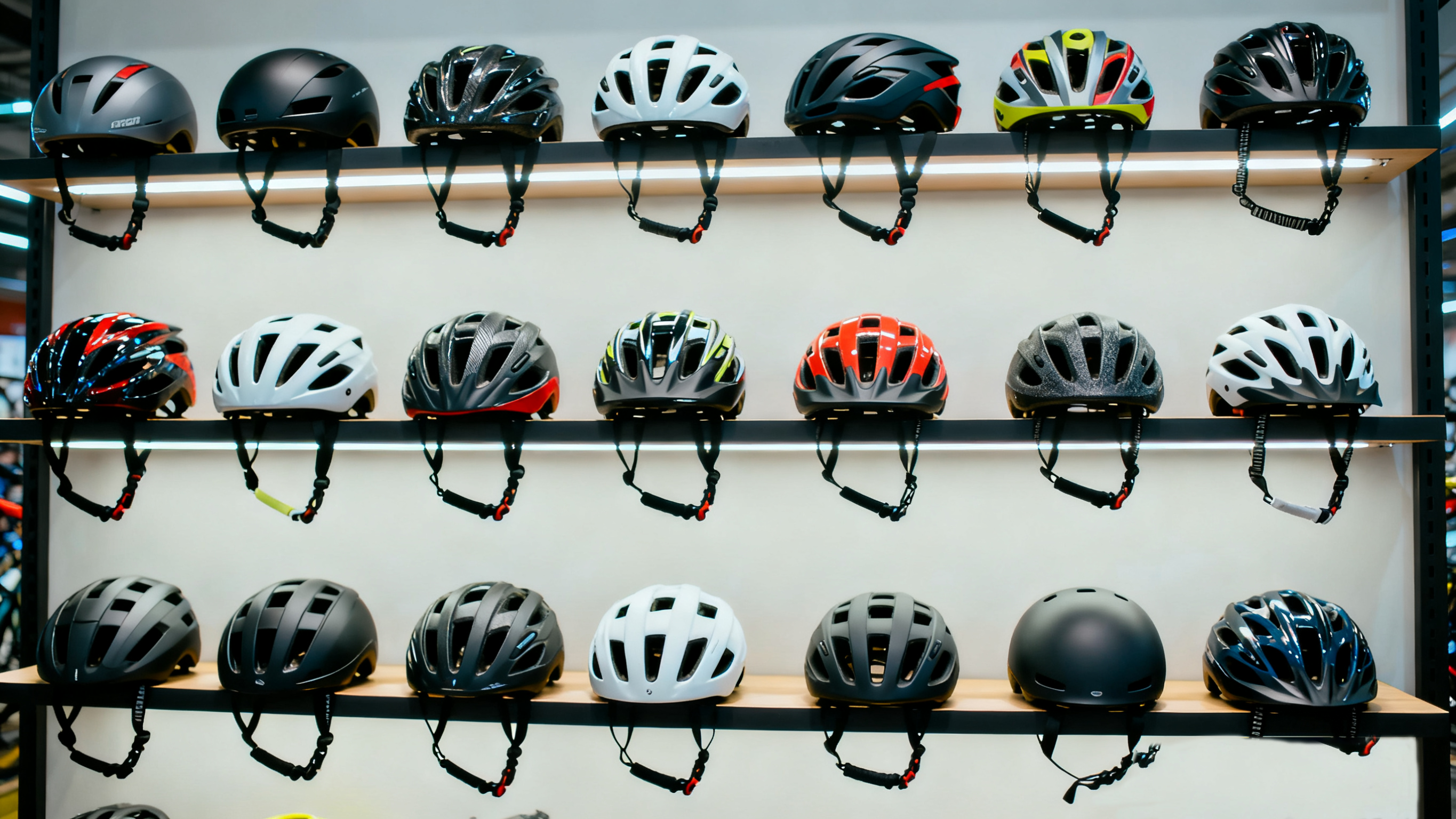Views: 0 Author: Site Editor Publish Time: 2025-11-12 Origin: Site










The world of cycling is constantly evolving, with new technologies and styles emerging each season. As riders across Europe push the boundaries of speed, endurance, and exploration, the gear they rely on must keep pace. The humble bike helmet, once a simple piece of safety equipment, has transformed into a sophisticated blend of technology, style, and sustainability.
This year, we're seeing exciting developments that are reshaping what riders expect from their helmets. From smart features that enhance safety to designs that prioritize environmental responsibility, the trends of 2025 reflect a more connected, conscious, and performance-driven cycling community. This post will explore the key helmet trends taking hold across Europe, from the professional peloton to the daily city commute.
One of the most significant trends in the sports helmet market is the integration of smart technology. These aren't just protective shells anymore; they are becoming command centers for the modern cyclist. Smart helmets are equipped with features that increase safety, convenience, and connectivity on the road.
Visibility is a top concern for cyclists, especially in urban environments or during low-light conditions. Smart helmets now come with built-in LED lights on the front and back, making riders more visible to motorists and pedestrians. Some advanced models even feature automatic brake lights that activate upon deceleration and turn signals controlled by a handlebar remote or head gestures. This technology significantly improves a rider's ability to communicate their intentions, reducing the risk of accidents.
Peace of mind is invaluable, especially when riding alone or on challenging terrain. Many smart helmets now include crash detection sensors that can tell if a rider has had a fall. If an impact is detected, the helmet's companion app will automatically send an SOS alert with the rider's GPS location to pre-selected emergency contacts. This feature is a game-changer for safety, ensuring that help can be dispatched quickly in an emergency.

The professional cycling circuit has always been a proving ground for the latest advancements in gear. What we see on the heads of athletes in the Tour de France or the Giro d'Italia often trickles down to the consumer market, and 2025 is no exception. This year, the focus is on aerodynamics and advanced protection systems.
As cyclists strive for every possible advantage, aerodynamics have become a crucial factor in helmet design. Manufacturers are using wind tunnel testing and computational fluid dynamics (CFD) to create bike helmets that slice through the air with minimal resistance. We're seeing more helmets with smoother profiles, kamm-tail designs, and strategically placed vents that optimize airflow without sacrificing ventilation. This trend is popular not just with competitive racers but also with enthusiasts looking to boost their performance on their weekend rides.
While all helmets must meet basic impact safety standards, the conversation has shifted to protecting the brain from rotational forces, which are common in cycling crashes and can lead to severe brain injuries. Multi-directional Impact Protection System (MIPS) and similar technologies are becoming standard features in mid- to high-end helmets. These systems use a low-friction layer inside the helmet that allows the head to move slightly upon impact, redirecting harmful rotational forces away from the brain. As awareness grows, more riders are insisting on this added layer of protection.
The cycling community has a deep appreciation for the outdoors, so it's no surprise that environmental sustainability has become a major trend in product design. Brands are increasingly exploring eco-friendly materials and manufacturing processes to reduce their carbon footprint.
Forward-thinking helmet manufacturers are moving away from traditional petroleum-based plastics and foams. We are seeing an increase in helmets constructed from recycled EPS (expanded polystyrene) foam, recycled polycarbonate shells, and even plant-based polymers. Straps are being made from recycled PET bottles, and some padding incorporates natural fibers. These initiatives show a commitment to protecting the planet that cyclists love to explore.
The focus on sustainability extends beyond the product itself. Companies are ditching single-use plastics in their packaging in favor of recycled cardboard, soy-based inks, and compostable bags. This holistic approach to reducing environmental impact resonates strongly with consumers who want to support brands that align with their values.
Beyond the technical specifications and features, the stories behind the helmets are capturing riders' attention. Cyclists are drawn to brands that are actively involved in the community and share authentic user experiences.
Riders want to see how helmets perform in the real world, not just in a lab. Brands are successfully leveraging user-generated content (UGC) and rider testimonials to build trust and credibility. Seeing a bike helmet withstand the rigors of a cross-country bikepacking trip or protect a commuter in a city crash is powerful social proof. These authentic stories create a connection that traditional marketing often can't match.
Aligning with major cycling events and sponsoring professional athletes remains a powerful way for brands to showcase their products. When a trusted athlete like Tadej Pogačar or Demi Vollering wears a particular helmet, it provides an instant endorsement of its quality and performance. These partnerships help solidify a brand's reputation and demonstrate its commitment to the sport at the highest level.

The European helmet market in 2025 is a dynamic space where safety, technology, and sustainability intersect. Whether you are a competitive racer seeking an aerodynamic edge, a daily commuter wanting better visibility, or an eco-conscious rider looking for sustainable gear, there has never been a better time to find a helmet that perfectly suits your needs.
As you consider your next helmet purchase, look for these trends. Prioritize features that match your riding style, and don't be afraid to invest in advanced protection like MIPS. By choosing a helmet that embraces the latest innovations, you're not just protecting your head—you're enhancing your entire cycling experience.